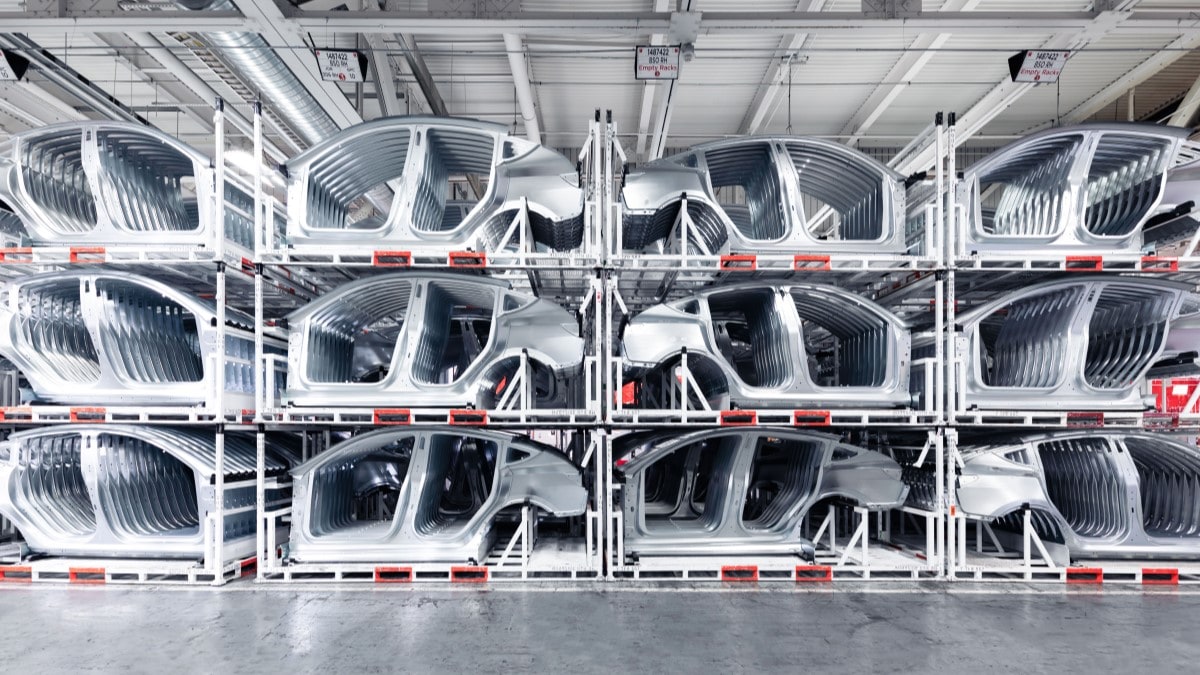Studying the history of efficient manufacturing post World War II is largely studying the Toyota Motor Corp. The company revolutionized factories worldwide with its early embrace of what business experts today would call just-in-time manufacturing techniques.
The Toyota Production System is studied worldwide by manufacturers of nearly everything a factory can build. It was officially formalized in 1992. But you can see its origins as early as Toyota’s first postwar production efforts when it started building trucks for the U.S. Army to use in the Korean War. The Toyota Production System changed the world.
They’ve concluded, though, that Tesla’s production process is better.
That is, perhaps, overstating things. But industry publication Automotive News reports, “Toyota Motor Corp. has tapped premium brand Lexus to lead the company’s shift toward using gigacasting for large aluminum parts.”
Gigawhat?
“Gigacasting” is Tesla’s process for building cars out of very few, very large cast parts. The word itself is marketing nonsense. Tesla CEO Elon Musk is fond of attaching the prefix “giga” to things like factories and pressing machines. It has no mathematical meaning in this usage. It’s just advertising slang for “really big.”
But the idea behind it is simple — building a car’s frame and structure out of as few parts as possible should maximize efficiency and minimize mistakes.
Fewer, Bigger Parts
Tesla began manufacturing its cars with conventional unibody constructions made from hundreds of parts fastened together in thousands of places. But, as it grew, it invested in larger and larger castings. Today, it builds cars from far fewer parts.
Perhaps the best exploration of the idea comes from the engineers at Munro and Associates, who tear down cars and study their construction, selling their insights to automakers who want to learn from the competition. In a recent video (watch only if you know you’ll be interested in 20 minutes of two engineers talking about fasteners), founder Sandy Munro breaks down how the first Tesla Model 3 the company acquired used 120 parts just to build from the D-pillar back.
In the most recent Model Y the company inspected, that’s one part.
Toyota, AN says, is impressed.
Toyota will let Lexus pioneer new building techniques for future electric cars. But AN reports it “plans to build the entire underbody using three separate gigacast modules for the front, middle, and rear.”
Even existing Toyota EVs are starting to benefit from the process. “Early results show that the rear floor of the bZ4X can be created in one piece from one process, down from 86 parts that require 33 manufacturing processes.”
“Gigacasting will play a very big role in the LF-ZC, as we want to drastically simplify the manufacturing process of our next-generation EVs,” Lexus President Takashi Watanabe told the audience at the recent Japan Mobility Show.
Why You Should Care
It’s probably not worth much of your time to understand how your car was built. But the rise of gigacasting has important implications for the future of car ownership.
Toyota isn’t alone in pursuing it. AN notes that Ford, Hyundai, and Volvo are all pursuing gigacasting for future EVs.
It will make them lighter by eliminating thousands of fasteners and acres of adhesive. That will help extend vehicle range. Lexus, AN reports, says, “The production LF-ZC due in 2026 will have a high-performance lithium-ion battery capable of 500 miles of range.” Incredibly, the company thinks it can get there without future high-performance solid-state batteries.
But gigacasting means that light damage is expensive to repair. Already, insurers are writing off even lightly damaged Teslas because replacing a small part isn’t possible when there are no small parts. Car insurance rates are soaring in many states — a phenomenon that will only get worse when fender benders necessitate replacing a third of a car.
Automakers might find some ways to mitigate that problem. A Tesla’s battery is a structural part of the car — repair shops can’t replace part of it without replacing all of it. That’s not true of some automakers’ modular battery designs.
And some engineers believe that gigacasted parts may be safer in accidents, though the insurance industry doesn’t yet have enough data to be sure.
Cars Could Be Cheaper To Buy, More Expensive To Own
If the entire auto industry moves to gigacasting, cars may be cheaper, lighter, and even safer. But they’ll grow more expensive and complicated to repair, perhaps adding to the phenomenon of Americans keeping their cars longer than ever.
That will leave automakers — knowing you won’t be back to buy another car for more than a decade — even more tempted to charge monthly fees for car features to bring in predictable income.
The future of car ownership is getting weird.








